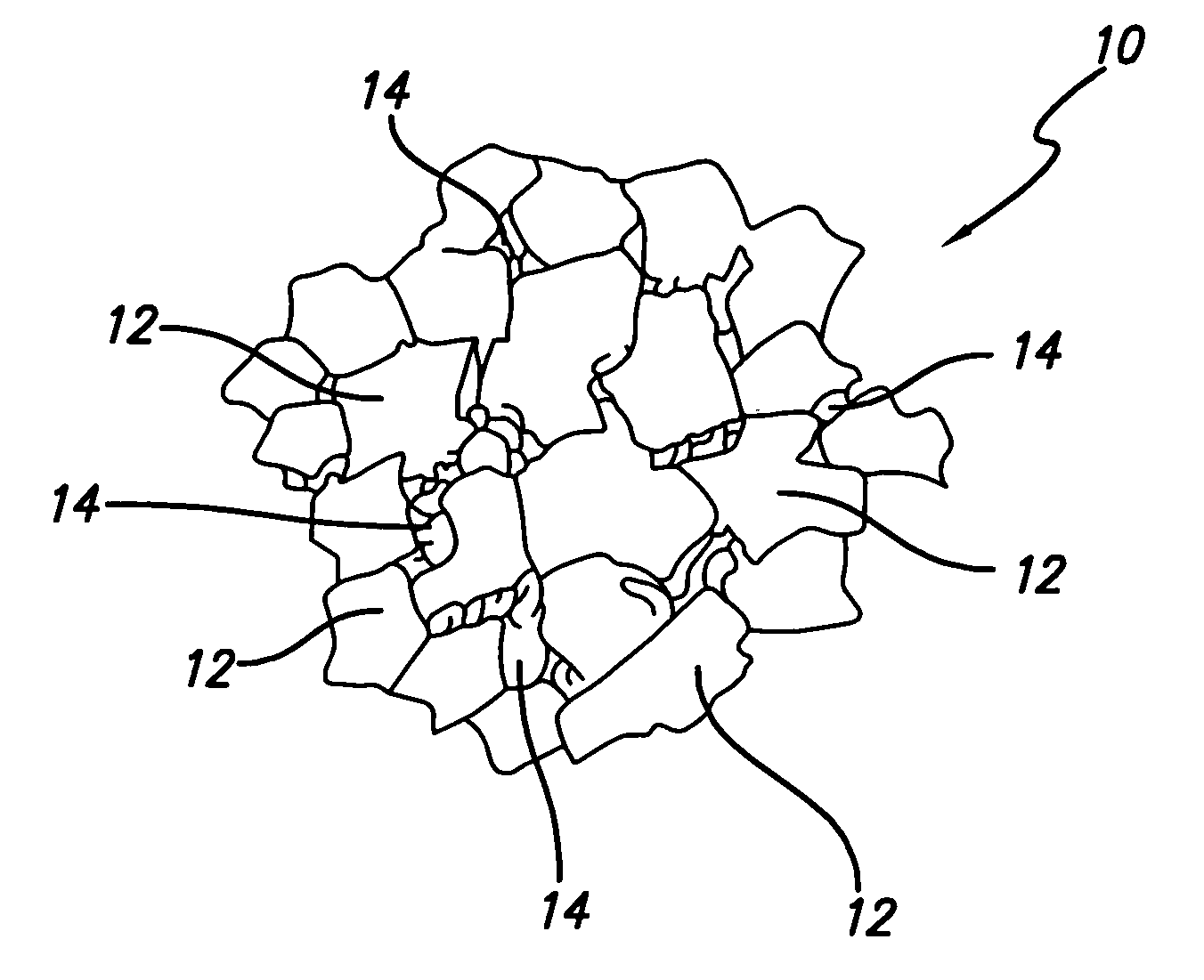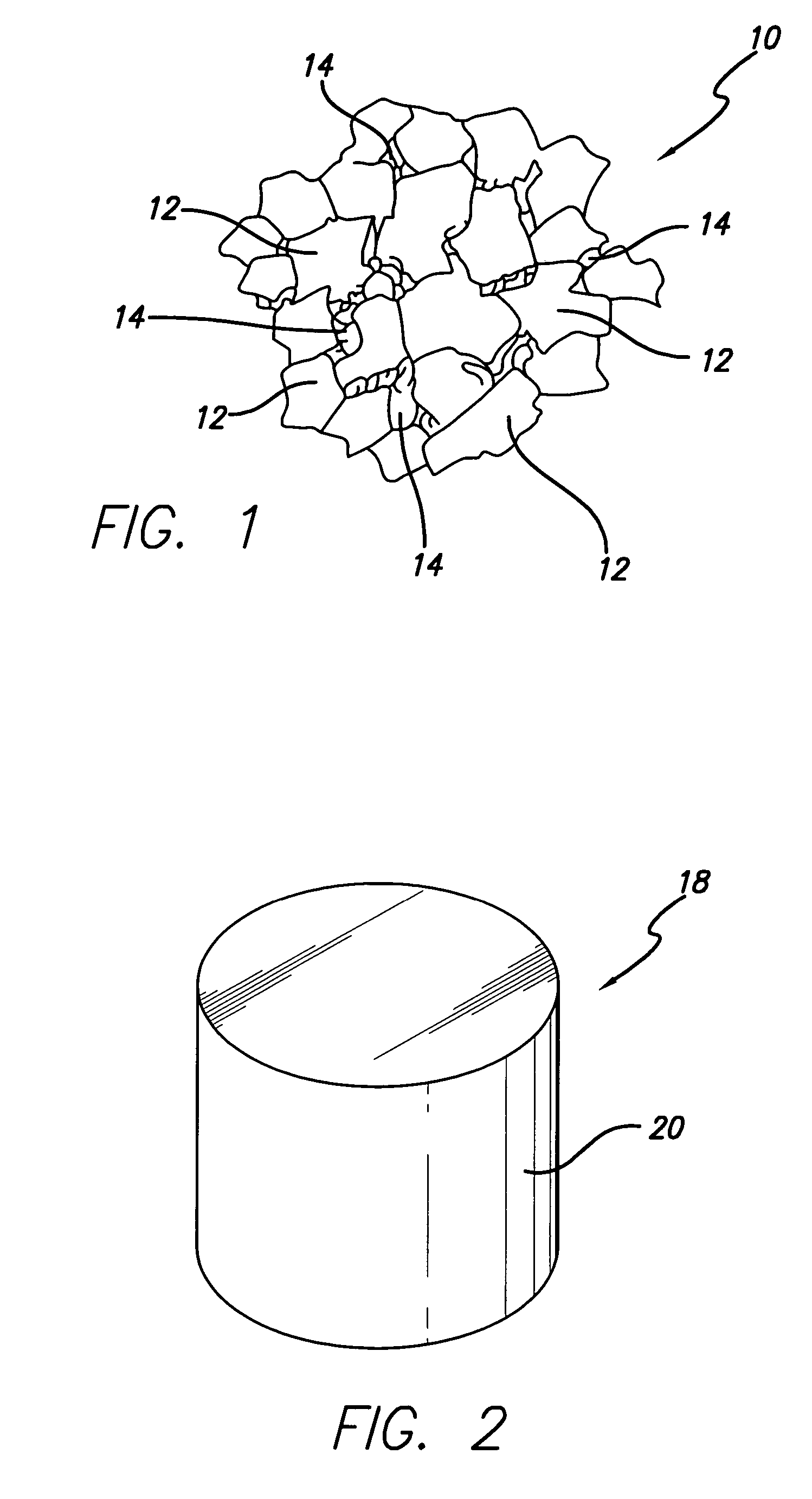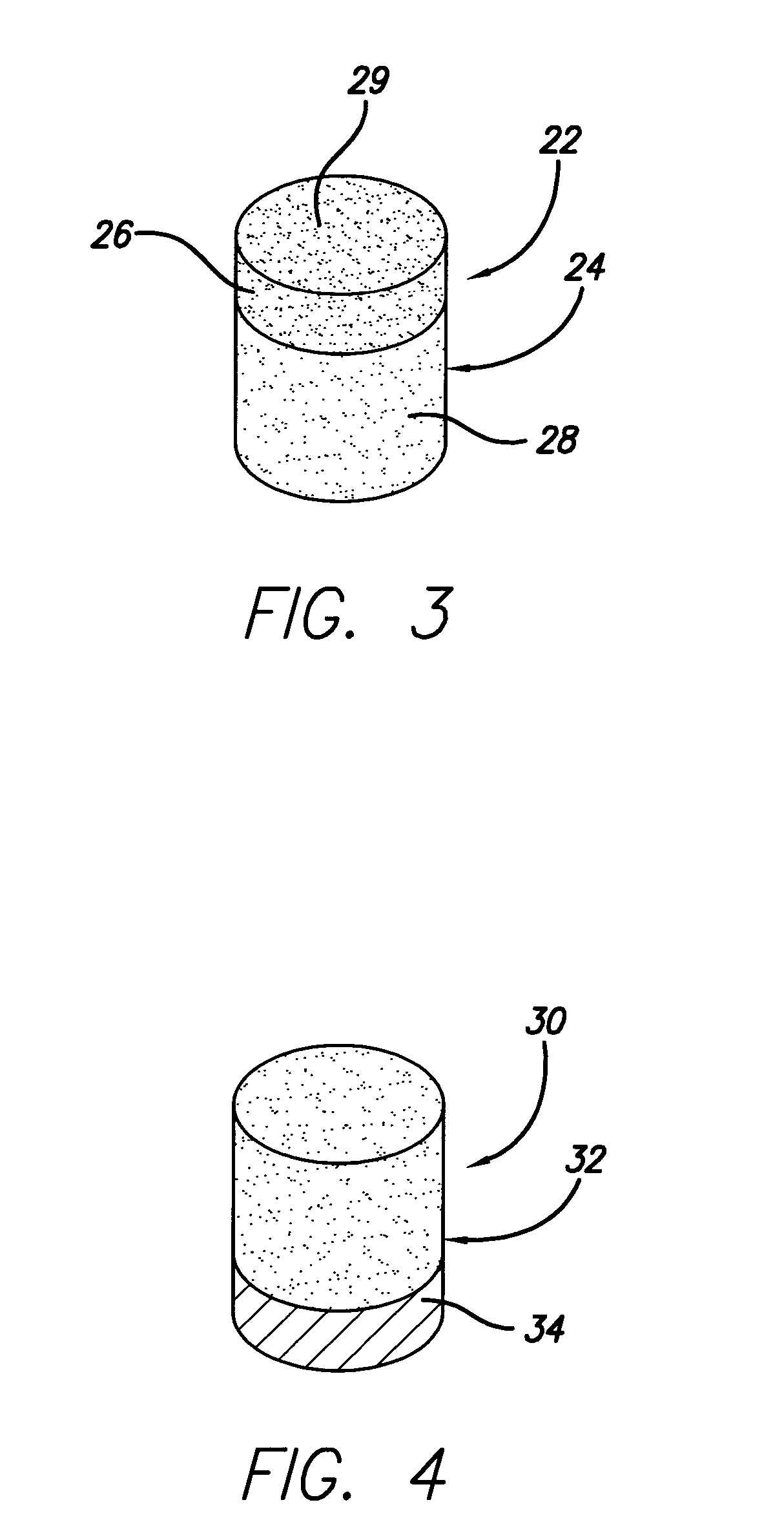Thermally-stable polycrystalline diamond materials and compacts
a polycrystalline diamond, compact technology, applied in the field of polycrystalline diamond materials, can solve the problems of thermal degradation cracks and chips, etc., and achieve the effects of enhancing bonding, enhancing the thermal stability of the polycrystalline diamond material, and promoting the thermal stability of the resulting polycrystalline diamond material
- Summary
- Abstract
- Description
- Claims
- Application Information
AI Technical Summary
Benefits of technology
Problems solved by technology
Method used
Image
Examples
example 1
Thermally Stable PCD Material Formed Using a Silicon Getter Material
[0045]Synthetic diamond powder having an average grain size of approximately 20 micrometers was combined with cobalt powder having an average grain size of approximately 0.5 micrometers. The two powders were combined, and the resulting mixture had a diamond powder volume percent of approximately 95% based on the total volume of the mixture. The two powders were mixed together for a period of approximately 2-6 hours by ball milling. Powdered silicon carbide and pure silicon were each added to the mixture. Approximately 3 percent by volume of silicon carbide and 3 percent of pure silicon was added based on the total weight of the combined mixture. The mixture was then blended together for a period of 3 hours by ball milling. The resulting mixture was cleaned by heating to a temperature in excess of 850 C under vacuum and was loaded into a desired high pressure / high temperature vessel sized and shaped to provide a desi...
PUM
| Property | Measurement | Unit |
|---|---|---|
| temperatures | aaaaa | aaaaa |
| temperature | aaaaa | aaaaa |
| size | aaaaa | aaaaa |
Abstract
Description
Claims
Application Information
 Login to View More
Login to View More - R&D
- Intellectual Property
- Life Sciences
- Materials
- Tech Scout
- Unparalleled Data Quality
- Higher Quality Content
- 60% Fewer Hallucinations
Browse by: Latest US Patents, China's latest patents, Technical Efficacy Thesaurus, Application Domain, Technology Topic, Popular Technical Reports.
© 2025 PatSnap. All rights reserved.Legal|Privacy policy|Modern Slavery Act Transparency Statement|Sitemap|About US| Contact US: help@patsnap.com



